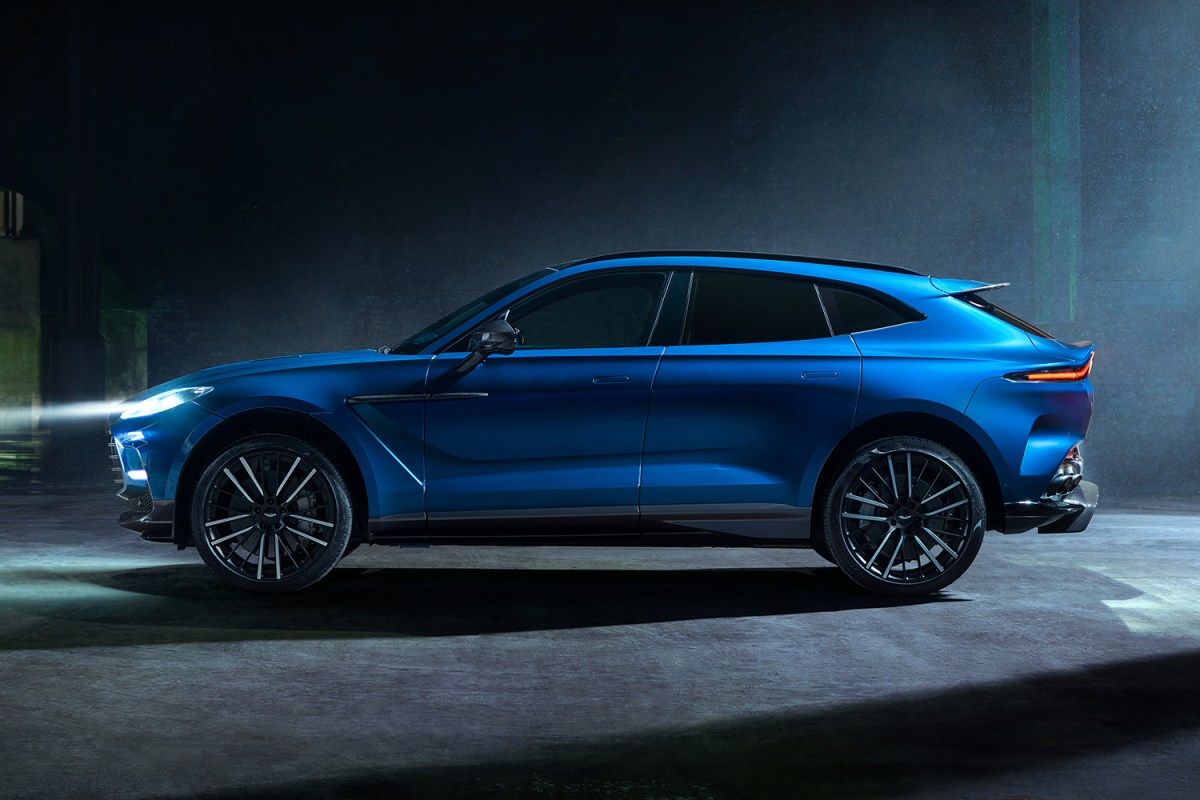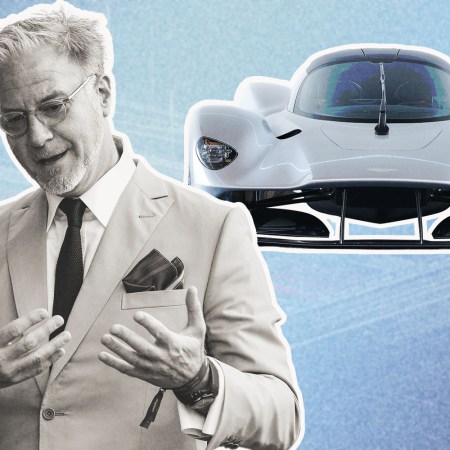Aston Martin arrived fashionably late to the sport-utility party when they debuted the DBX in 2021, but they’ve shown up right on time for the burgeoning super-SUV segment. Comprised of offerings like the Lamborghini Urus and Porsche Cayenne Turbo GT, in many ways it is the natural endgame of luxury-performance consumer tastes: a vehicle that offers hair-raising performance, effortless comfort and the family-friendly pragmatism that comes along with seating for five adults and ample cargo space.
While automakers like Audi and Mercedes-AMG offer a similar proposition to North American buyers in low-slung wagon form by way of the RS 6 Avant and E63 S, respectively, preference for a high-riding vantage point and some semblance of off-road capability has seen automakers tasked with combining these seemingly disparate attributes in order to satiate demand for one be-all, end-all package. Although it isn’t without its foibles, the Aston Martin DBX707 presents a compelling case that this fusion can be done very effectively.

SUV Looks, Supercar Performance
Acceleration is perhaps the most immediately discernible way of separating supercars from the more pedestrian performance vehicles, and the DBX707 certainly delivers on that front. The sprint to 60 mph from rest takes just 3.1 seconds by Aston Martin’s official measure, or a nearly a second quicker than the standard DBX. That not only puts this two-and-a-half-ton sport utility vehicle right on par with the aforementioned Porsche and Lambo offerings, it also gives exotic coupes like the Ferrari Roma and Maserati MC20 legitimate cause for concern. (It’s also on par with the Lamborghini in price, as it starts at whopping $236,000, which is a few thousand higher than the Urus.)
As you’d expect, Aston Martin made a number of changes throughout the vehicle’s powertrain to deliver and support that supercar level of thrust. The standard DBX’s nine-speed automatic transmission has been replaced by a nine-speed “wet clutch” gearbox for quicker gear changes as well as added strength, while a shorter final drive gear ratio yields more urgent response off the line. The DBX’s 4.0-liter V8 has been massaged for additional power as well — a new pair of turbochargers as well as tweaks to the induction, exhaust and engine management systems yield a peak output of 697 horsepower (or 707 by European measurement standards, thus the name) and 663 lb-ft of torque. Those figures represent gains of 155 hp and 147 lb-ft over the standard DBX, and out-muscle the competition by a substantial margin.
Review: The Aston Martin DBX Is Late to the SUV Party, But Worth the Wait
We tested the largest and potentially most important model to bear the winged badgeMany of the DBX707’s other tweaks and upgrades over its predecessor were necessitated by this newfound grunt as well. At the front end there’s a new grille that’s 27% larger than the regular DBX to increase airflow for improved engine cooling, while aerodynamic bits like the new carbon fiber front splitter, rear wing and extended diffuser keep the big machine stable as it muscles its way to a claimed 193 mph top speed. The exterior changes trade some of the DBX’s understated elegance for a more aggressive look, but it’s a measured, purposeful approach that retains the automaker’s unmistakable aesthetic.

Unmistakably an Aston
When it comes to their road cars, Aston Martin has always been more focused on delivering unique character than chasing performance statistics, and the former still remains true here. The DBX707 proves to be a surprisingly adept handler out in the canyons, especially when its air suspension is lowered and stiffened in the Sport+ drive mode, but it’s not quite as pinned to the road as its German and Italian rivals. To make up for it, the Aston delivers a fantastic baritone bellow that its rivals simply cannot match. There’s a button on the center console that brings the V8’s active exhaust system to full song when pressed, and it was rarely disabled during our time with the SUV .
Even though performance is especially high on the list of design priorities for the DBX707, Aston Martin made sure not to forget about the luxury side of the equation. A feast of soft-touch leather and other high-quality materials adorn the cabin from top to bottom, while the new 16-way adjustable heated and ventilated sport seats manage to be supportive when the going gets fast, yet comfortable enough for relaxed long-haul stints at the wheel. We were also impressed by the detail and punch of the 800-watt, 14-speaker audio system during mellower moments when we quieted the exhaust system down, yet it’s the subtle details — like the weighted resistance of the knurled volume knob, and the satisfying click of the big carbon fiber shift paddles — that make the DBX707 feel truly posh.

The Double-Edged Sword
Back in 2013, Aston Martin forged a partnership with Mercedes-Benz that gave the British company access to various powertrain and electronics technologies in the German automaker’s portfolio. As a result, AMG-derived hardware like the 4.0-liter V8 under the DBX707’s hood, as well as the nine-speed wet clutch transmission it’s connected to, come at expense of some brand identity.
While it’s hard to argue with the results when it comes to the DBX707’s ferocious powertrain, the situation gets murkier with other technical elements. The infotainment system, for instance, is also borrowed from Mercedes-Benz, but unlike the engine and gearbox, it feels noticeably out of step with the times. It’s essentially a reworked version of a system that Mercedes-Benz phased out of their own production vehicles years ago, and as such, it lacks expected features like touchscreen functionality and wireless Apple CarPlay. Perceived in a vacuum, it’s not an egregious issue — the graphics are reasonably sharp, the system is responsive to inputs and it covers the essentials from a functional standpoint; but considering the competitive set that the DBX707 runs with, along with the fact that the infotainment system is one of the most often-used elements of a modern vehicle, it serves as an unavoidable reminder of the concessions that Aston Martin has had to endure as a low-volume luxury marque.
Minor shortcomings aside, the DBX707 showcases the significant progress that Aston Martin has made in recent years. It’s a bonafide stunner both from the street and the passenger seat, and most importantly behind the wheel, and while it may not be a wholly bespoke product of Gaydon, it still manages to capture the sophisticated flair and performance prowess that have long been hallmarks of the brand.
This article appeared in an InsideHook newsletter. Sign up for free to get more on travel, wellness, style, drinking, and culture.




















